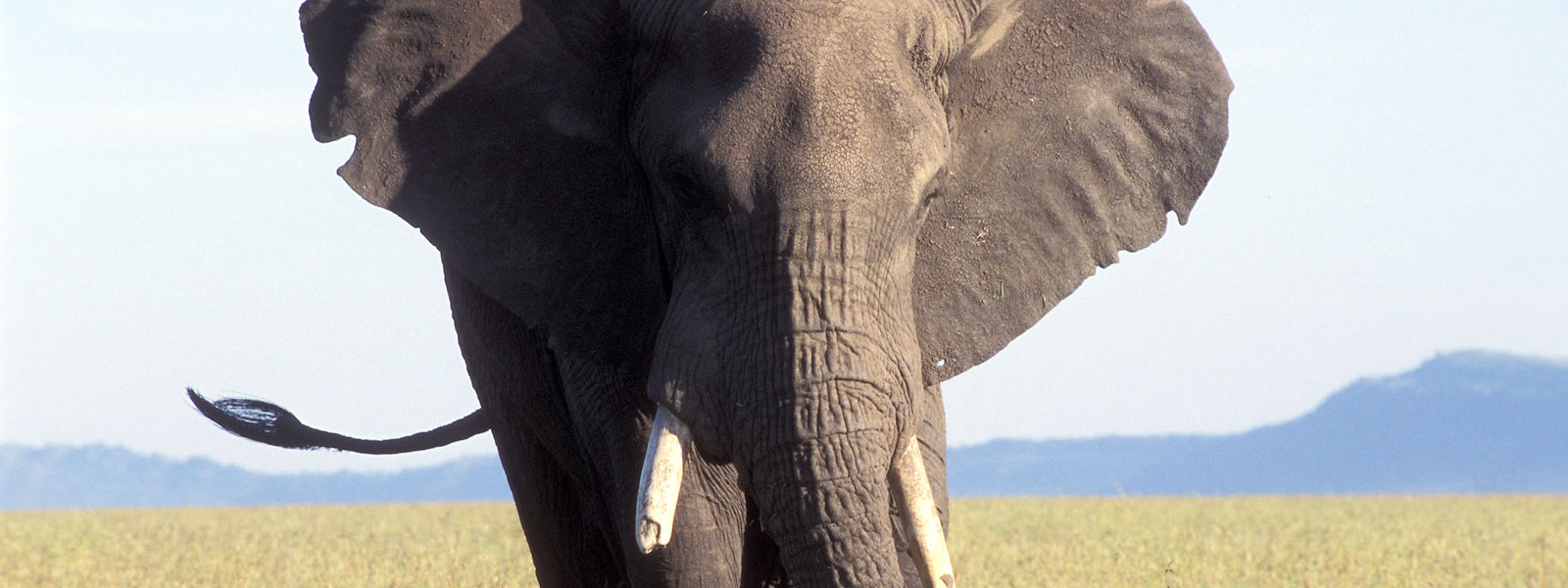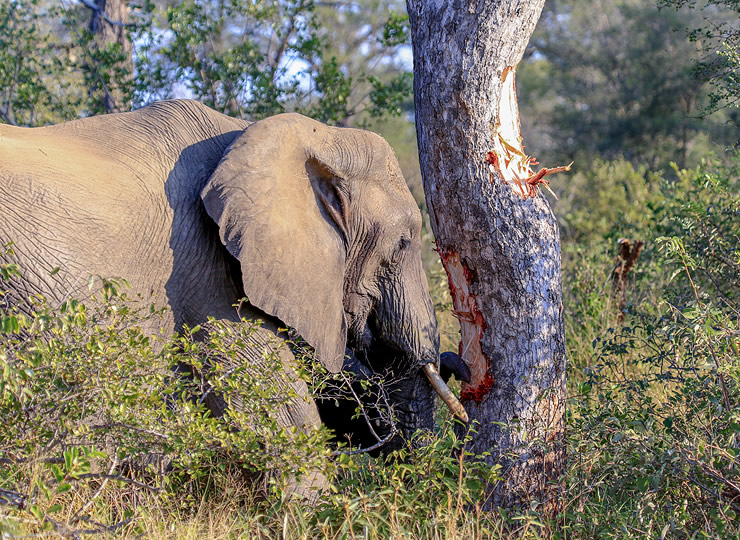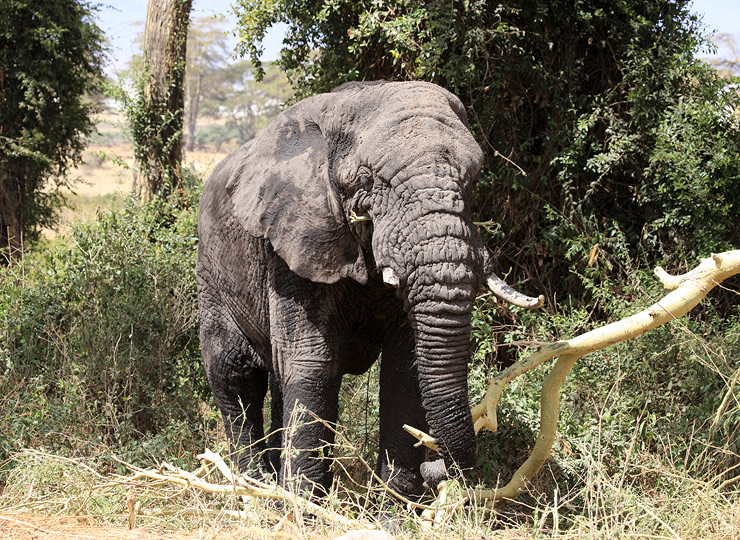African Elephant
Loxodonta africana

African elephants are the largest land mammals on the planet. Their impact on savanna ecosystems benefits big and small species alike.
Elephants are famous symbols of the African savanna, but they are less known for their role as ecosystem engineers: organisms that create, change, or maintain habitats. Elephants transform their habitats in a variety of ways: by knocking down trees, pulling up grass, plowing trails through dense plants, and digging water holes that other animals can use. Scientists have observed these impacts for decades. More recently, they’ve started studying the broader effects of elephants on species diversity.

Elephants often break branches and knock down trees, creating more habitat for smaller animals. Photo credit: iStock/Getty Images Plus

An elephant next to a large branch Photo credit: iStock/Getty Images Plus
Scientists compared similar areas where elephants were either present or absent. Areas where elephants were present had a greater diversity of small reptiles and amphibians. One possible explanation is that trees damaged by elephants provide habitats for communities of smaller animals.
